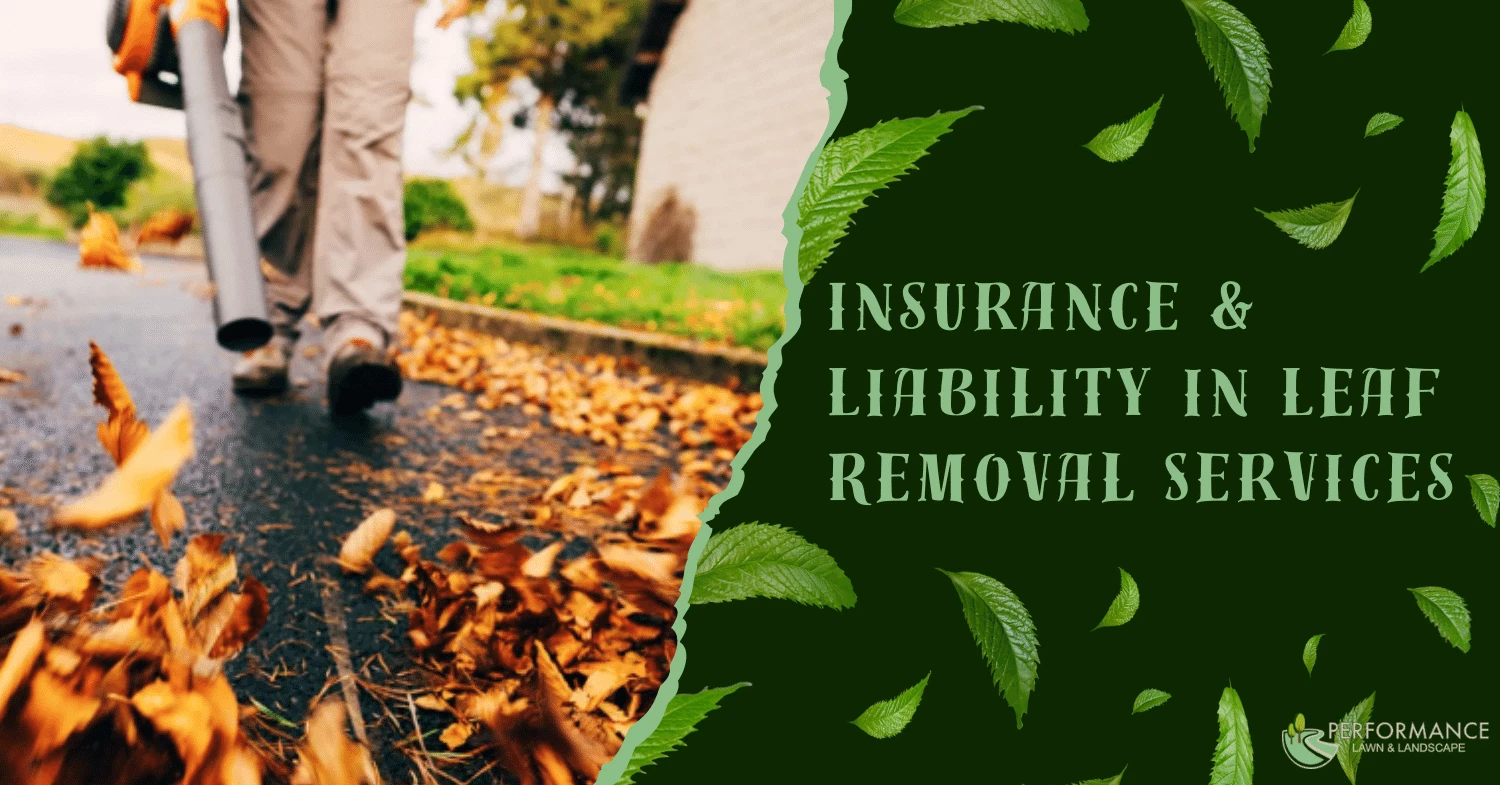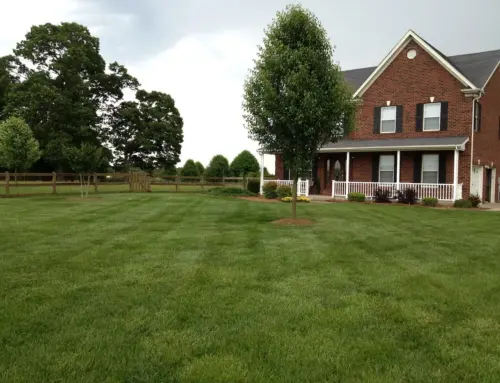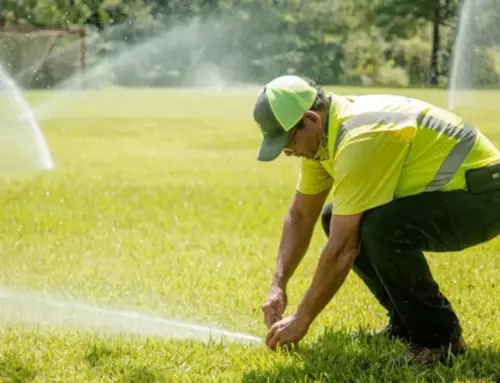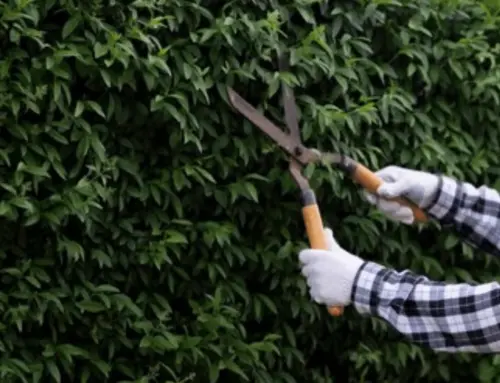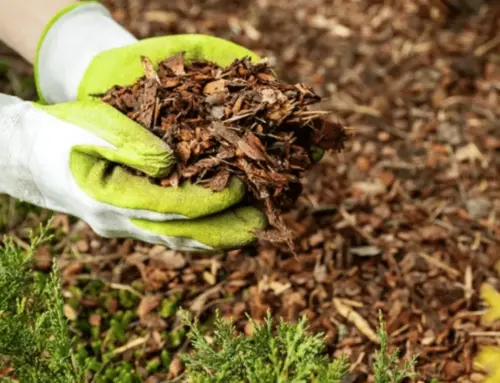As the autumn leaves begin to change colors and fall from the trees, many homeowners start thinking about the annual chore of leaf removal. Piles of leaves can quickly accumulate around your property, posing potential risks if not cleaned up properly.
Not only can leaves clog gutters and block drainage areas, but they can also invite unwanted pests into your yard when left unattended. While raking and bagging leaves yourself can work for smaller properties, larger yards with many trees may require professional leaf removal services.
However, before hiring a company to blow, rake or vacuum up your falling foliage, it’s important to understand how insurance and liability factors into the process.
How does insurance and liability in leaf removal services work?
Leaf removal services need insurance and liability to safeguard the provider and property owner. Reputable leaf removal services possess liability insurance. Insurance is essential for leaf removal accidents and damage. If a worker slips and falls while removing leaves on a client’s property, liability insurance would cover medical and legal fees.
Liability insurance covers repairs or replacement if leaf removal equipment breaks a window or destroys landscaping. Property owners should use an insured leaf removal service to reduce liability for accidents or property damage.
From the service provider’s perspective, liability insurance protects them financially and enhances their credibility and trustworthiness in the eyes of potential clients. It demonstrates a commitment to professionalism and accountability in their operations.
Additionally, service providers may consider workers’ compensation insurance to cover any injuries sustained by their employees during the leaf removal process. Proper insurance coverage ensures a smooth and risk-free leaf removal service for both parties.
What are the primary insurance requirements for leaf removal service providers, and how do these policies protect the business and clients in case of accidents or property damage?
Leaf removal service providers typically need two primary insurance policies to protect their business and clients: General Liability Insurance and Workers’ Compensation Insurance.
- General Liability Insurance: This policy covers potential accidents and property damage during leaf removal services. It provides financial protection in case a worker injures themselves on a client’s property or if the removal equipment damages the property.
In such situations, the insurance will cover medical expenses, legal costs, and property repair or replacement, ensuring that clients are not left with unexpected financial burdens. It also helps protect the service provider’s assets and reputation.
- Workers’ Compensation Insurance: This insurance is crucial for protecting employees. In work-related injuries or illnesses, it covers medical expenses and lost wages for the injured workers.
Workers’ compensation insurance ensures that employees receive proper care and shields the business from potential lawsuits filed by injured workers. This policy is often required by law in many states and is essential to protecting the business and its employees.
With these insurance policies, leaf removal service providers mitigate financial risks and demonstrate their commitment to professionalism and client satisfaction. Clients, in turn, can confidently hire these providers, knowing that they are protected in case of accidents or property damage during the leaf removal process.
Are there specific liability considerations for leaf removal services when working in residential versus commercial settings, and how can providers adjust their insurance coverage accordingly?
Yes, there are specific liability considerations when providing leaf removal services in residential versus commercial settings, and providers should adjust their insurance coverage accordingly.
Residential settings typically involve smaller, more confined spaces and a higher likelihood of close interaction with homeowners. Providers should consider potential accidents involving homeowners or their pets while working on their property. Additionally, residential clients may have more sentimental or delicate landscaping, which increases the risk of accidental damage.
In contrast, commercial settings may involve larger areas and different types of landscaping, such as office parks, shopping centers, or industrial properties. Providers may need to adjust their coverage to account for potential damage to more substantial structures or landscaping elements.
To adjust insurance coverage accordingly, leaf removal service providers should consult with their insurance agent or broker to customize their policies based on the specific risks associated with their settings. This may involve increasing coverage limits, adding endorsements for property damage, or considering umbrella insurance policies to provide extra protection.
Customizing insurance coverage ensures that providers are adequately protected in residential and commercial settings, regardless of each environment’s unique risks.
What steps should homeowners or property owners take to verify leaf removal service providers’ insurance and liability coverage before hiring them for their projects?
Before hiring a leaf removal service provider, homeowners or property owners should take the following steps to verify the insurance and liability coverage of the provider:
- Request proof of insurance: Ask the leaf removal service provider to provide documentation of their insurance coverage. This should include certificates of insurance for General Liability Insurance and Workers’ Compensation Insurance. Ensure the documents are current and have the provider’s name, coverage limits, and policy expiration dates.
- Verify the insurance with the provider’s insurer: Contact the insurance company listed on the certificates of insurance to confirm that the coverage is valid and up-to-date. This extra step can help ensure that the provider’s coverage is genuine and not expired.
- Check for proper licensing: In some areas, leaf removal service providers may be required to have licenses or permits to operate legally. Verify that the provider holds any necessary licenses or permits in your jurisdiction.
- Review reviews and ask for references: Review reviews and testimonials from previous clients to assess the provider’s track record. Additionally, ask the provider for references you can contact to inquire about their experience with the service.
- Consult with legal counsel if needed: If you have concerns about the provider’s insurance coverage or liability protection, consider consulting with legal counsel for guidance on the specific contracts and agreements involved.
By taking these steps, homeowners or property owners can ensure that the leaf removal service provider they hire has adequate insurance and liability coverage, reducing the risk of financial and legal issues in case of accidents or property damage during the project.
Some Scenarios Where Insurance and Liability Issues in Leaf Removal Services Became Significant Factors
Indeed, here are some real-life examples where insurance and liability issues in leaf removal services played a crucial role, underscoring the importance of proper coverage:
- Accidental Property Damage: A leaf removal crew cleared leaves from a residential property when a large branch from a nearby tree fell and damaged the homeowner’s roof. The homeowner filed a claim for the repair costs.
Fortunately, the leaf removal service had General Liability Insurance, which covered the damage, saving the homeowner from out-of-pocket expenses and the service provider from potential legal action.
- Worker Injury: During a leaf removal project at a commercial site, one of the workers slipped on wet leaves and suffered a back injury. The worker required medical treatment and time off work. Workers’ Compensation Insurance, carried by the leaf removal company, covered the worker’s medical expenses and lost wages.
Without this coverage, the injured worker might have sued the business, leading to legal complications and financial liability for the provider.
- Property Owner Liability: In a different scenario, a leaf removal provider did not properly secure their equipment, which rolled down a slope and damaged a neighboring property’s fence. In this case, the leaf removal service was liable for the damages, but without General Liability Insurance, they faced significant out-of-pocket expenses and potential legal disputes.
These examples highlight the critical importance of insurance and liability coverage in leaf removal services, protecting property owners, workers, and service providers from unexpected accidents, injuries, and property damage while ensuring a smoother resolution of potential disputes.
Experience Safety and Security with Our Insured Services
Take action today to ensure the safety and security of your property during leaf removal. By choosing Performance Lawn and Landscapes, you’re opting for a service that promises quality and delivers peace of mind through comprehensive General Liability and Workers’ Compensation Insurance.
Don’t leave things to chance; safeguard your property and protect yourself from legal or financial issues. Contact us now, and let’s discuss how our insured services can address your leaf removal needs while putting your mind at ease.

